Ring Door View Cam Review
Ring Door View Cam Review
The easiest doorbell to install ever
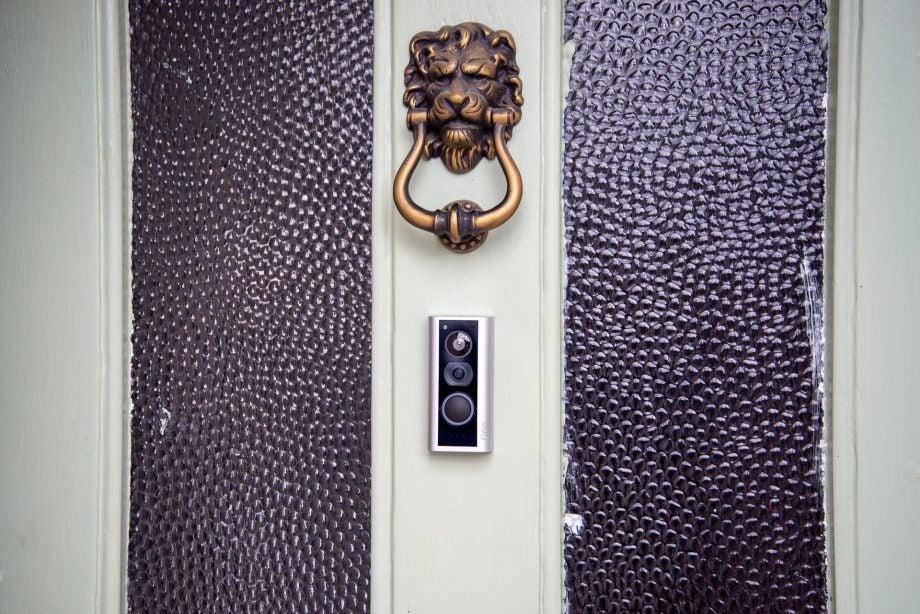
Verdict
If you don’t have room for a smart doorbell or aren’t allowed to drill holes, then the Ring Door View Cam is a smart upgrade for an existing peephole and can be installed in a matter of minutes. It has all the quality features that we expect from Ring, including full HD video and clear audio. The lack of Google Assistant support is disappointing and the camera moves with the front door, making a traditional doorbell placement a better choice if that’s an option. That said, this product fills a sizeable niche and does a brilliant job.
Pros
- Really easy to install
- Excellent privacy controls
- Works brilliantly
Cons
- Camera swings with door
- No Google Assistant support
Key Specifications
- Review Price: £179
- 97 x 47 x 20mm (external)
- 1080p resolution
- 155-degree field of view
- Cloud recording with subscription
- Night vision
- Amazon Alexa support
There are a fair few video doorbells to choose from, but current models are largely designed to replace a traditional doorbell. The Ring Door View Cam is different as it’s designed to replace an existing peephole in a door. This means the Door View Cam is really easy to install and particularly suitable for renters or apartment dwellers who may not be able to drill holes to install a more traditional smart doorbell.
Design and Installation – The Ring Door View Cam is the easiest doorbell to install
- Just take out your old peephole and slide the new one in
- The camera is small and neat on the outside but chunky on the inside
- With the battery on the inside, this model is harder to tamper with
Provided you’ve already got a peephole in your door, there’s absolutely no drilling or messing around. A handy tool is provided to scrape away any paint holding your peephole in place, and can then be used to unscrew the peephole.
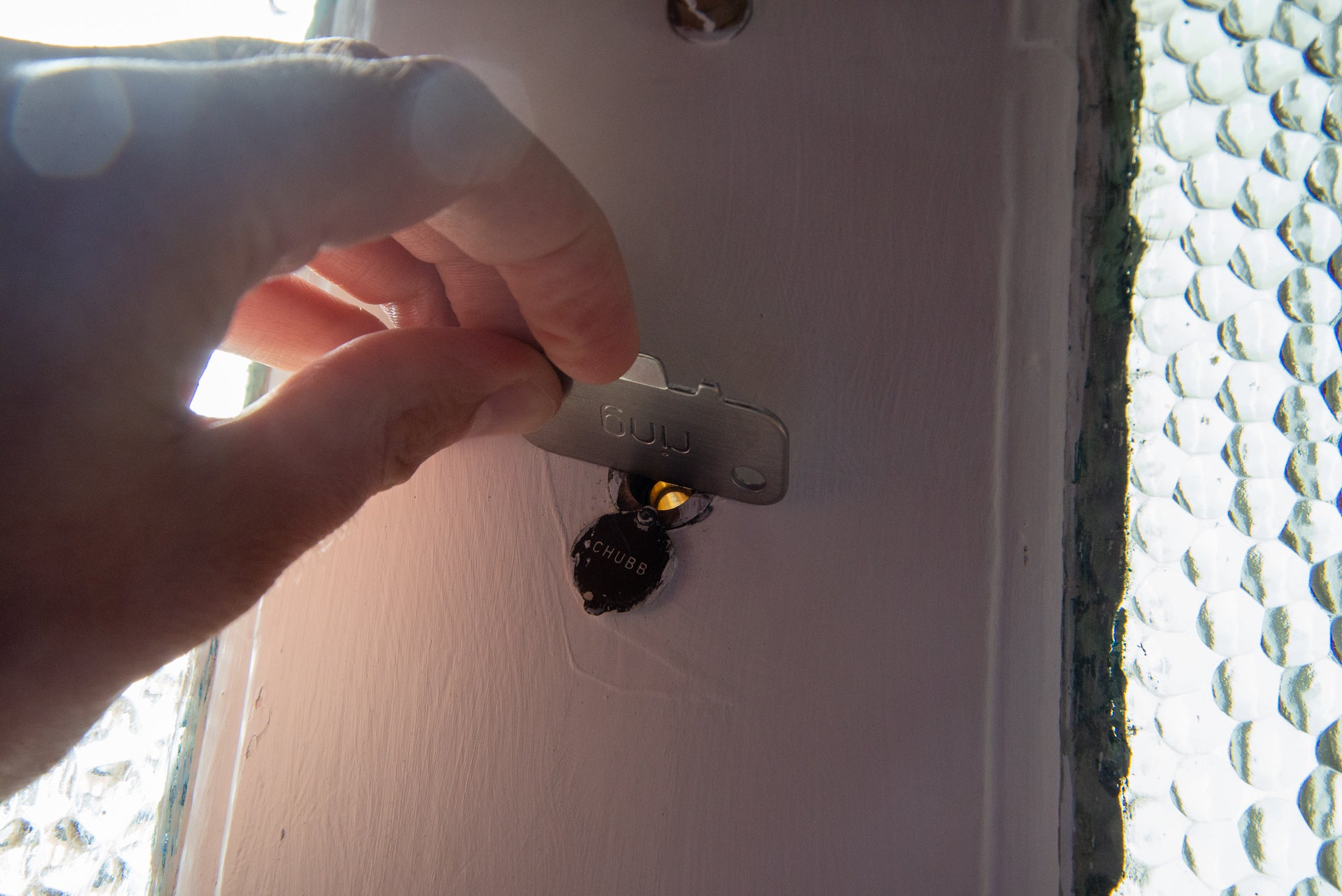
The tool provided helps you remove the old peephole and install the new doorbell
You then slide the Ring Door View Cam through from the front (it fits doors between 34mm and 55mm thick), and attach the rear panel, which houses the battery. Plug in the connecting cable (there’s a spare in the box in case you damage the original) and use the tool to tighten up the screw – and you’re done. All that’s left is to slide the battery pack, which needs to be charged via its micro USB port, into place. From start to finish, it took me no more than five minutes to get the old peephole out and the new doorbell in place – that’s impressive going.
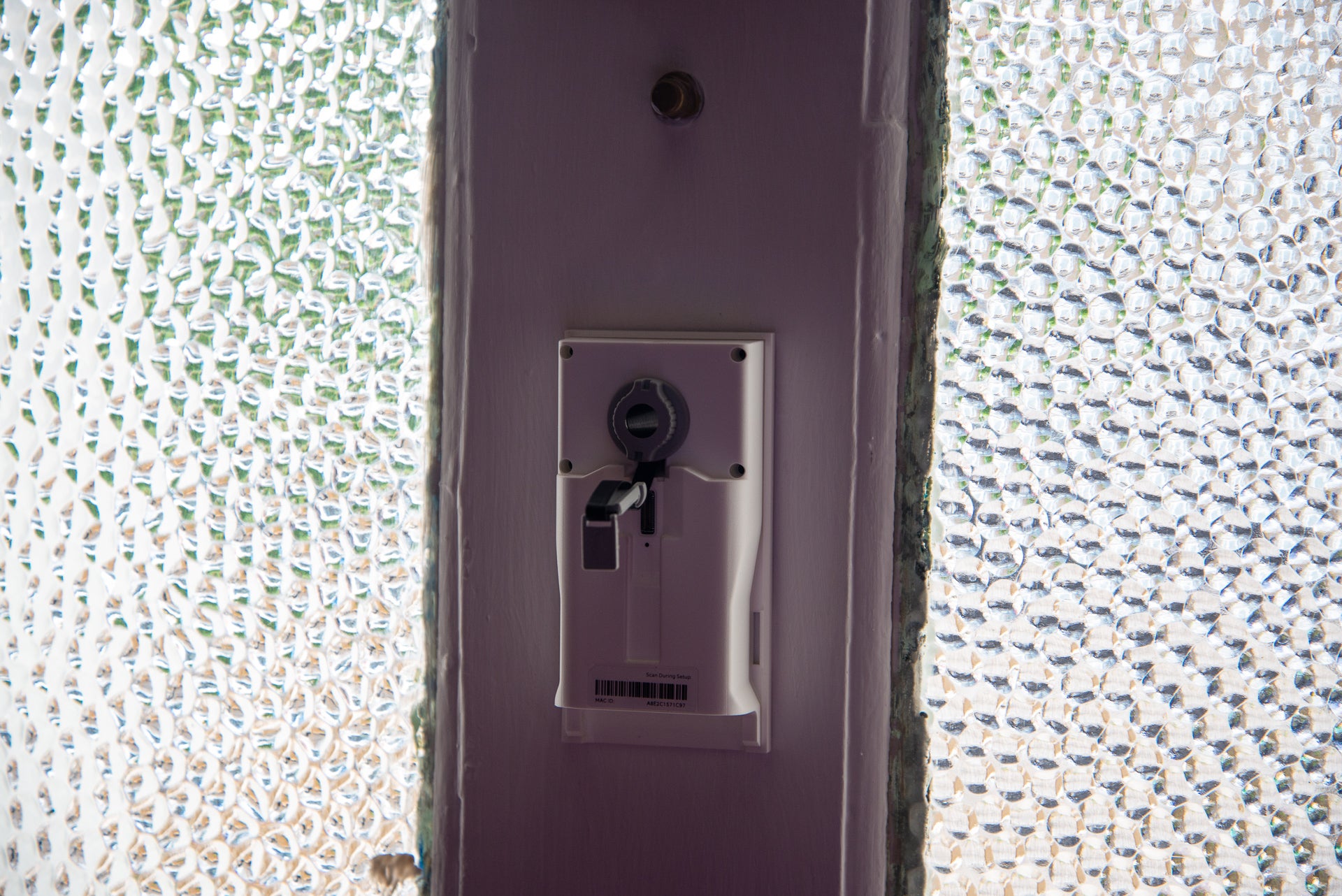
Plug the cable into the rear box and you’re done
Once you’ve finished, you can use the Ring app to connect the doorbell to your home wireless network. In the UK, the Ring Door View Cam connects to a 2.4GHz network, so you’ll need a fairly strong signal for it to work properly.
From the outside, the Door View Cam looks much like the Ring Video Doorbell 2, although this model is a lot thinner as the battery is accommodated inside the house. This setup has a second advantage in that the Door View Cam is harder to steal, as it would have to be pried away from the front of the door.
Cleverly, you still get a peephole, so you can look out through the lens to see what’s going on outside. It’s a much neater way of doing things than with the EZVIZ DP1, which has an LCD screen on the inside of the door to show the outside view. For privacy, there’s a small shutter that you can lift into place.
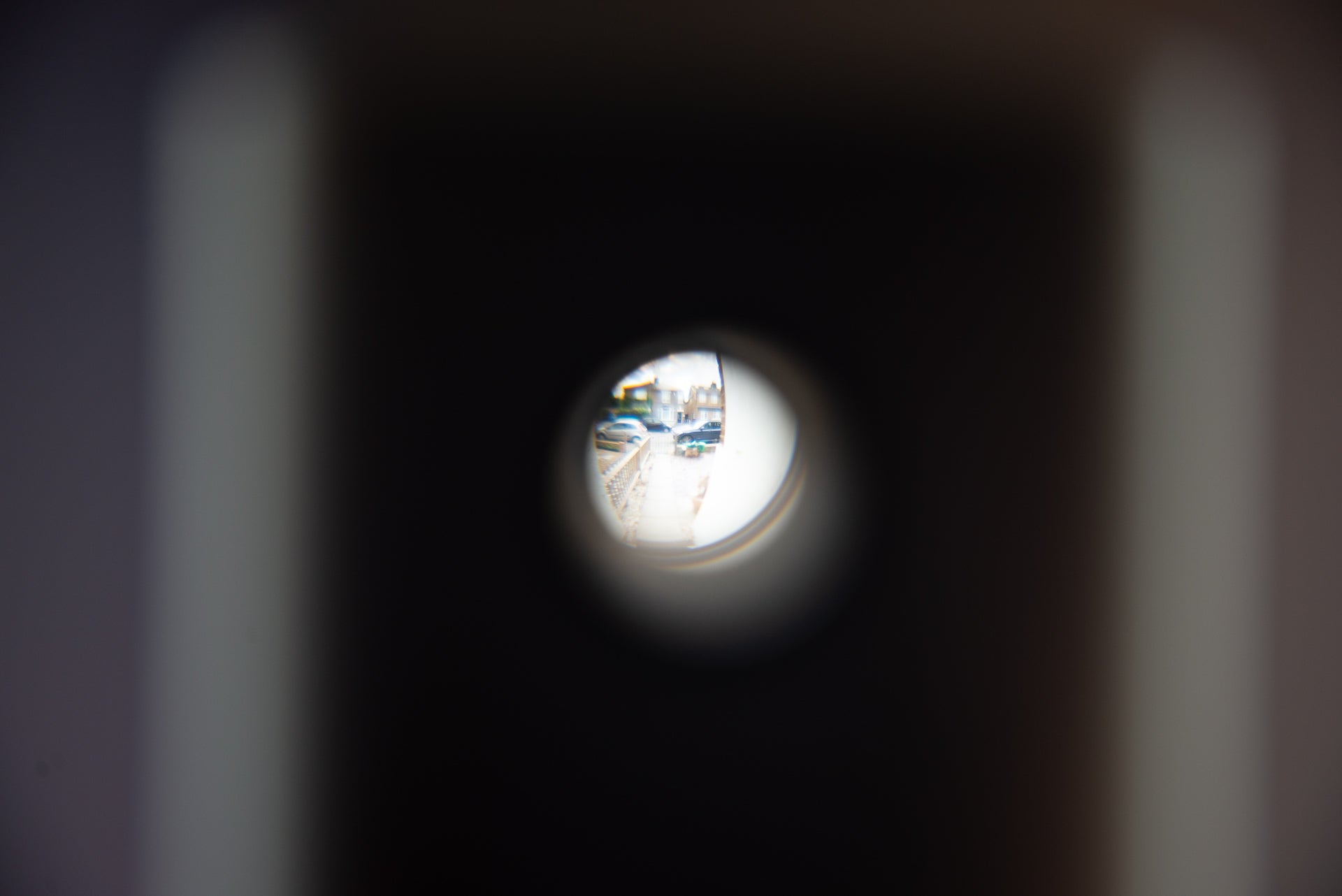
You can still use your peephole as normal
The faceplate comes attached to the doorbell, so you only get the single colour choice for this model, while Ring’s other doorbells have interchangeable faceplates and a choice of colours in the box.
Features – The Door View Cam has new privacy settings to help protect your neighbours, but leaves some odd results in your video library
- You can black out part of the image for privacy
- As the camera moves as you open the door, you get some strange clips
- Motion detection is basic and may have to be disabled
Neighbours’ privacy is a growing issue with smart doorbells and security cameras. The Door View Cam addresses this with its new Privacy Zone option. This lets you black out parts of the video feed, so you don’t have to see areas you’re not interested in, such as a neighbour’s garden. The blacking out is handled on-device, so no private footage is uploaded to the cloud.
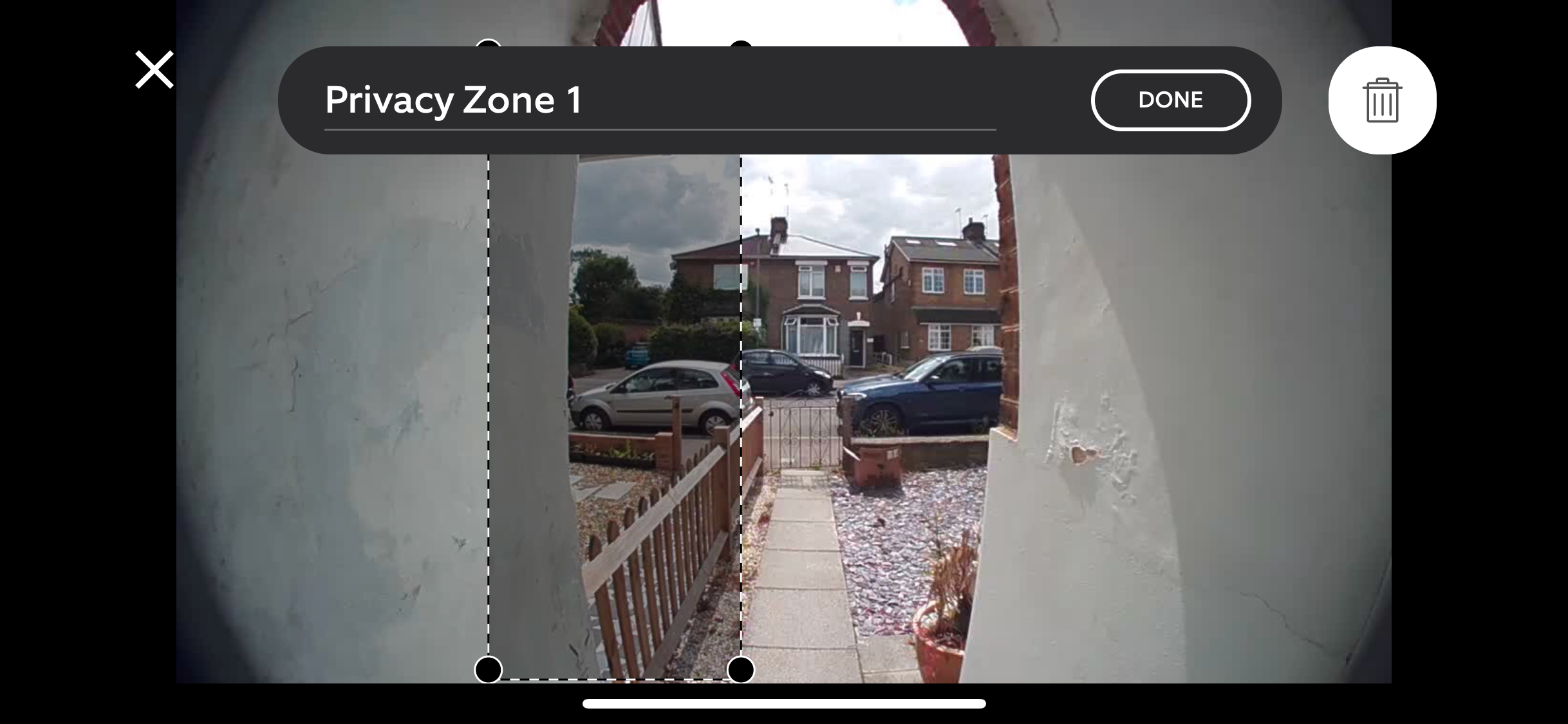
Privacy zones let you block out areas that you don’t want to record
It’s a neat feature, but a touch flawed. As the camera uses a PIR sensor to detect motion, you can end up with clips triggered by a neighbour where all you can see is the black box. Some kind of cloud processing would have been useful to either hide or delete clips where movement takes place in the blacked out area.
Using a PIR motion sensor is a great way to preserve battery life, but it does mean that any motion can wake up the camera and trigger a recording. Fortunately, Ring provides plenty of control over the settings to prevent too many alerts coming through. There’s an initial wizard that sets up some default options based on your answers, such as turning off motion detection if you have neighbours very close by, and you can also tweak settings individually.
First, you can adjust the motion sensitivity. Neatly, using the slider shows you a live still of the camera’s view, with a shaded blue circle showing the rough area where movement would trigger a recording. I found that it was possible to stop the Door View Cam from recording when people walked past the house, but not when the neighbours came home.
If your front door opens straight onto the street, or you have a lot of people walking past your door, you may not have enough adjustment, so you can disable motion detection completely.
There’s a bit more control over when you get notifications, too. You can set a schedule, defining when the Door View Cam will and won’t detect motion, and you can use the Motion Frequency setting to define how often the camera will send alerts: Frequent, Standard or Light.
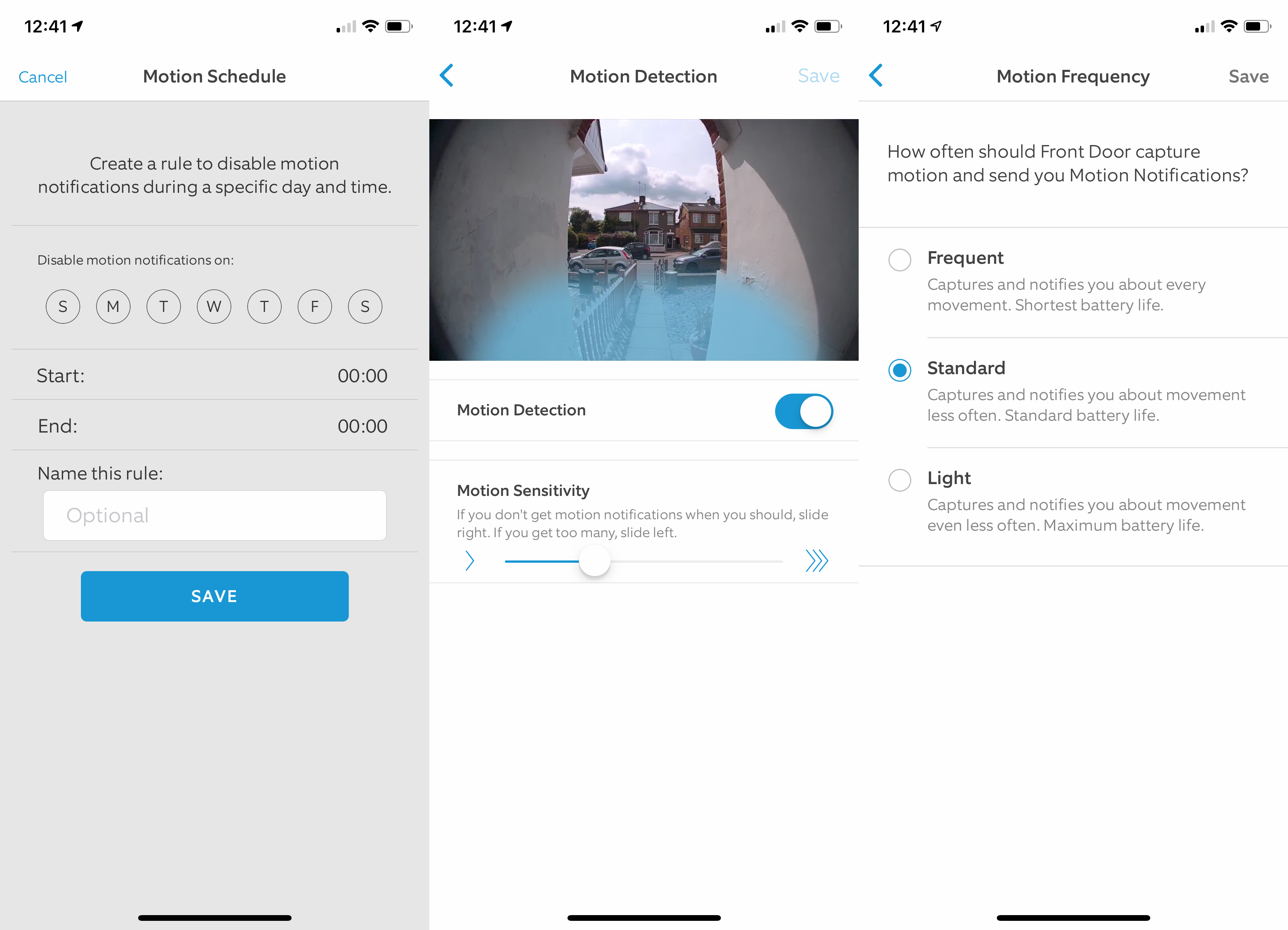
Ring gives you plenty of control over the motion detection settings
I like the Motion Snooze setting, too, which pauses alerts for your choice of 15 minutes, 30 minutes, one hour or two hours. It’s a handy feature if you’re, say, loading the car or have workmen coming in and out.
As a result of all the options, I managed to set the Ring Door View Cam so that I mostly got only important notifications: people actually coming up to the door.
Visitors will mainly use the Ring Door View Cam by pressing the button on the front. This sounds the chime via the doorbell’s speaker and pings a notification to your phone. As the Door View Cam can’t connect to your existing chime, unlike the Video Doorbell 2, you may want to invest in a Ring Chime (£29) to plug in inside your home.
As with other doorbells that I’ve tested, there’s around a 30-second delay between a bell press and a notification coming through to your phone; that’s usually enough time to answer the door to pretty much every visitor, although a few couriers were part way through making a runner.
You get the occasional person who refuses to use the doorbell and may knock instead. The Door View Cam has knock detection, with customisable sensitivity to pick up when someone does this and send you a notification. It works pretty well, too, picking up the times when someone used the door knocker rather than the bell.
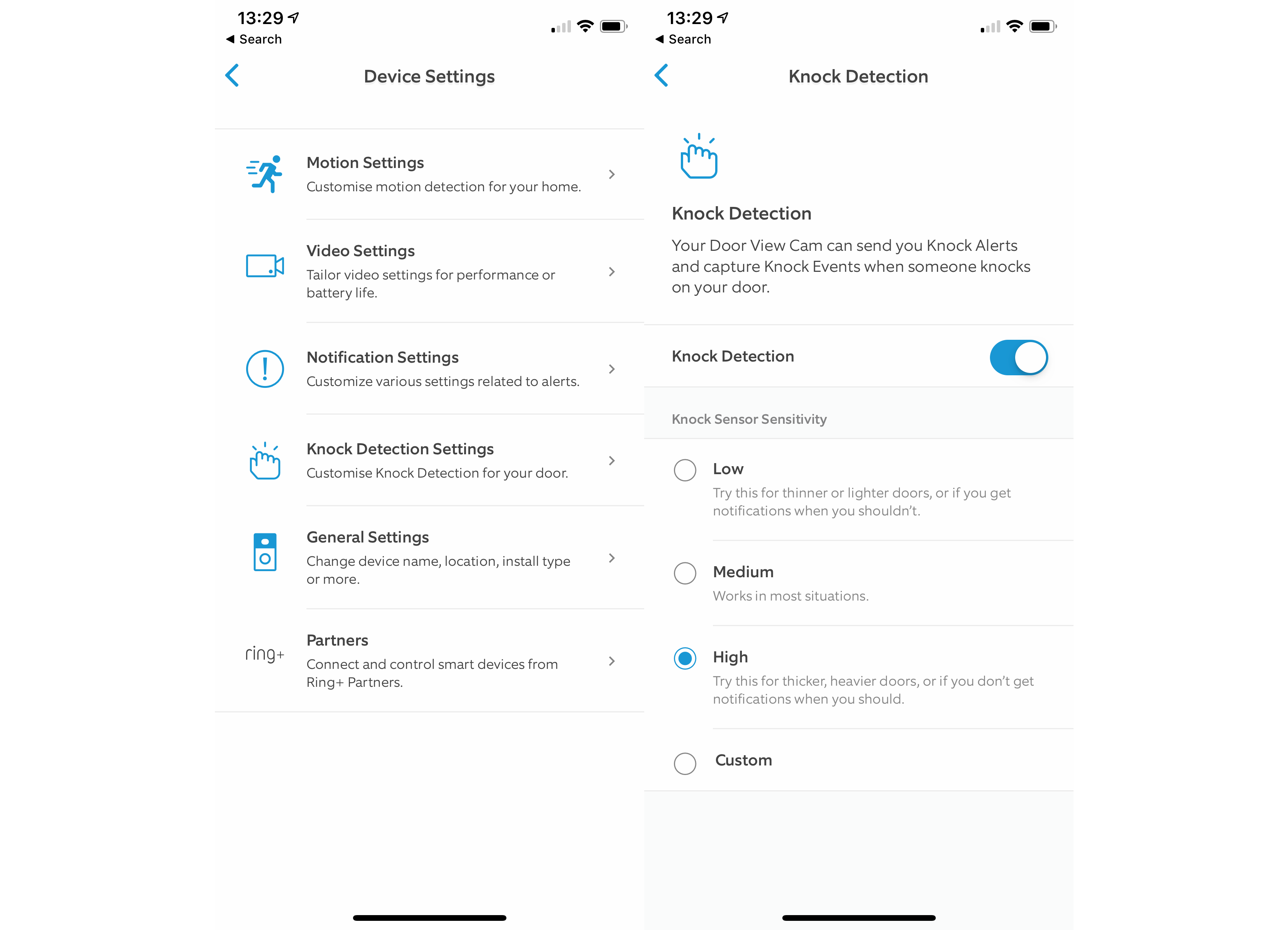
The doorbell can tell when someone has knocked on the door rather than using the button
However, opening and closing my front door tends to make the knocker bounce, which also sets off the knock detection. So, depending on the type of door that you have, you may want to disable this feature if it goes off too much.
Image quality – Video quality from the Ring Door View Cam is excellent, but the door movement can be unnerving
- Clean and detailed, the camera shoots well during the day with a 1080p resolution
- At night, IR helps the doorbell see, although the image gets a bit softer
- Privacy zones and your moving door can mean that you miss some important movement
When a notification comes in, you can only answer your door with your phone in landscape mode, which is a touch annoying as it’s harder to hold this way than in portrait mode. It’s a minor annoyance but one that I wish Ring would fix.
Once you’ve answered a ring or knock, the video quality is excellent. Ring has fitted a 1080p sensor, and there’s a 155-degree lens to capture everything in front of the camera. This model has HDR (high dynamic range) on it, which sucks a bit more battery life (you should still get six to 12 months on a charge, depending on how often the device is used), but meant that there was still plenty of detail at my front door even when the sun was shining directly on it. Certainly, it’s easy to pick out individual features, particularly when people are close to the door.
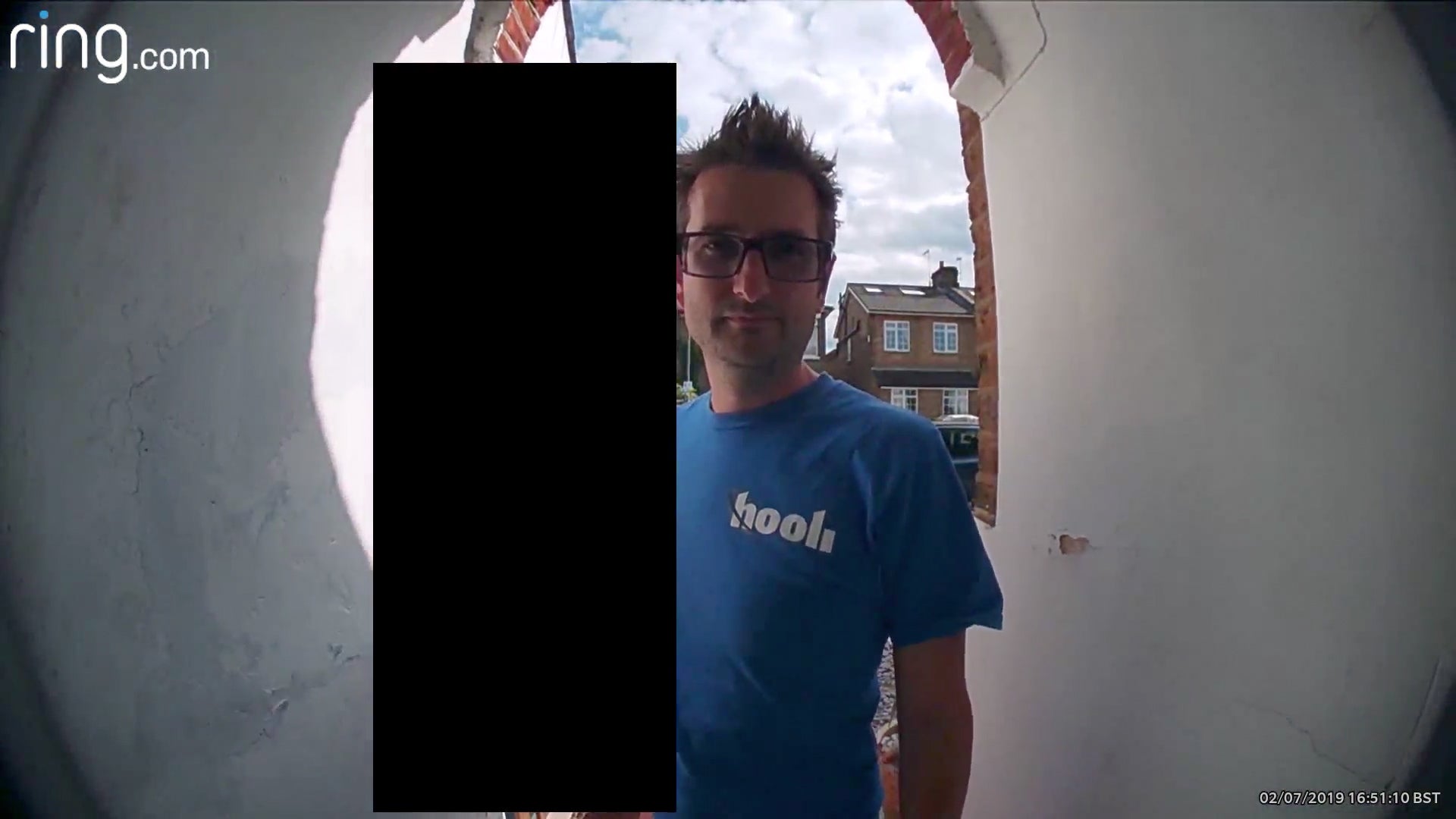
Daytime quality is excellent, but be careful where you place privacy zones so that you don’t block an important part of the image
At night, the camera uses its IR LEDs to give you a black-and-white view of the world. The LEDs are powerful enough to light up the area in front of your door. There’s a natural softening of detail, so that it becomes harder to tell the difference between people further away, but you can clearly see who you’re talking to when they’re up front and next to your door.
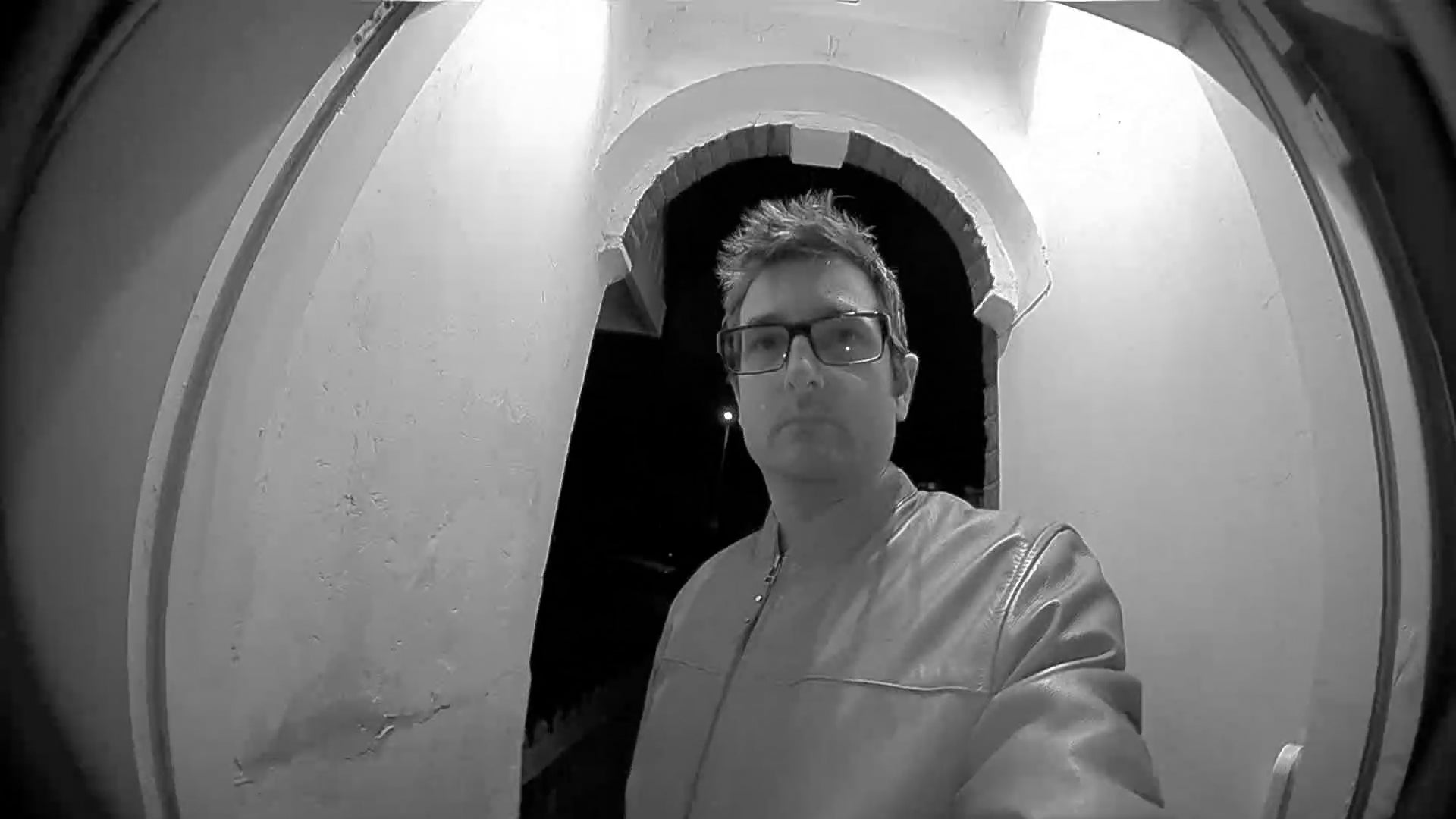
Night-time image quality is a bit softer but you can still see who’s at the door when the person is close up
However, the movement of the camera when you open your front door triggers motion recording. This means that, when you answer the door, you get a fair bit of footage of the side of your head. With a traditionally placed doorbell you still focus the recording on the person you’re talking to.
Footage is saved to the cloud, provided that you have a Ring Protect plan. The Protect Basic Plan costs £2.50 a month or £24.99 annually per camera for 30 days of recording; Protect Plus costs £8 per month or £80 annually, and also gives you access to all recordings for up to 30 days. If you don’t pay for a subscription you still get alerts and can answer the door, but no footage is recorded.
With a Ring Protect plan, when you go to the Timeline view, you can scroll through previous events to see what happened. This can be a bit tedious, particularly if you have a lot of recordings to get through. You can jump to a specific day and filter events by what triggered the recording (Ring, Motion, or Live View). Even so, scrolling back can be laborious.
The Event History view makes things a bit easier on this front, giving you a long list of recordings that you can filter by type. However, this view would be better if each event had a thumbnail image.
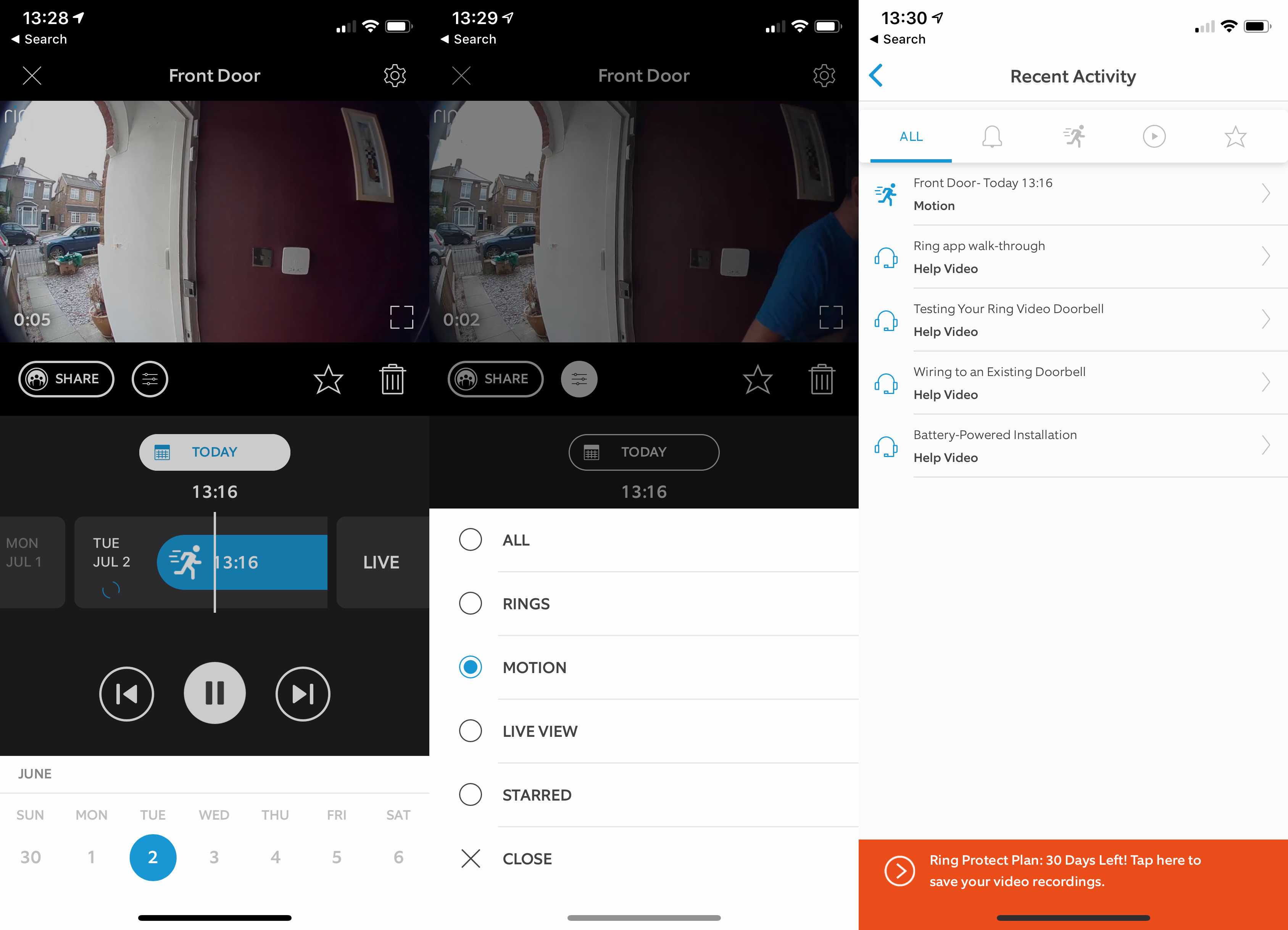
There are a few ways to view past footage but some thumbnails would be nice
Amazon Alexa integration is nice to see, with the Ring Door View Cam able to broadcast a message that someone’s at your front door on all of your Echo devices. If you have an Echo Show or Echo Show 5, you can answer your door, too. However, you have to say, “Alexa, answer,” which is a touch clunky. I prefer the way that the Nest Hello works with the Google Nest Hub, where you see a preview on the screen and can tap the answer button to talk.
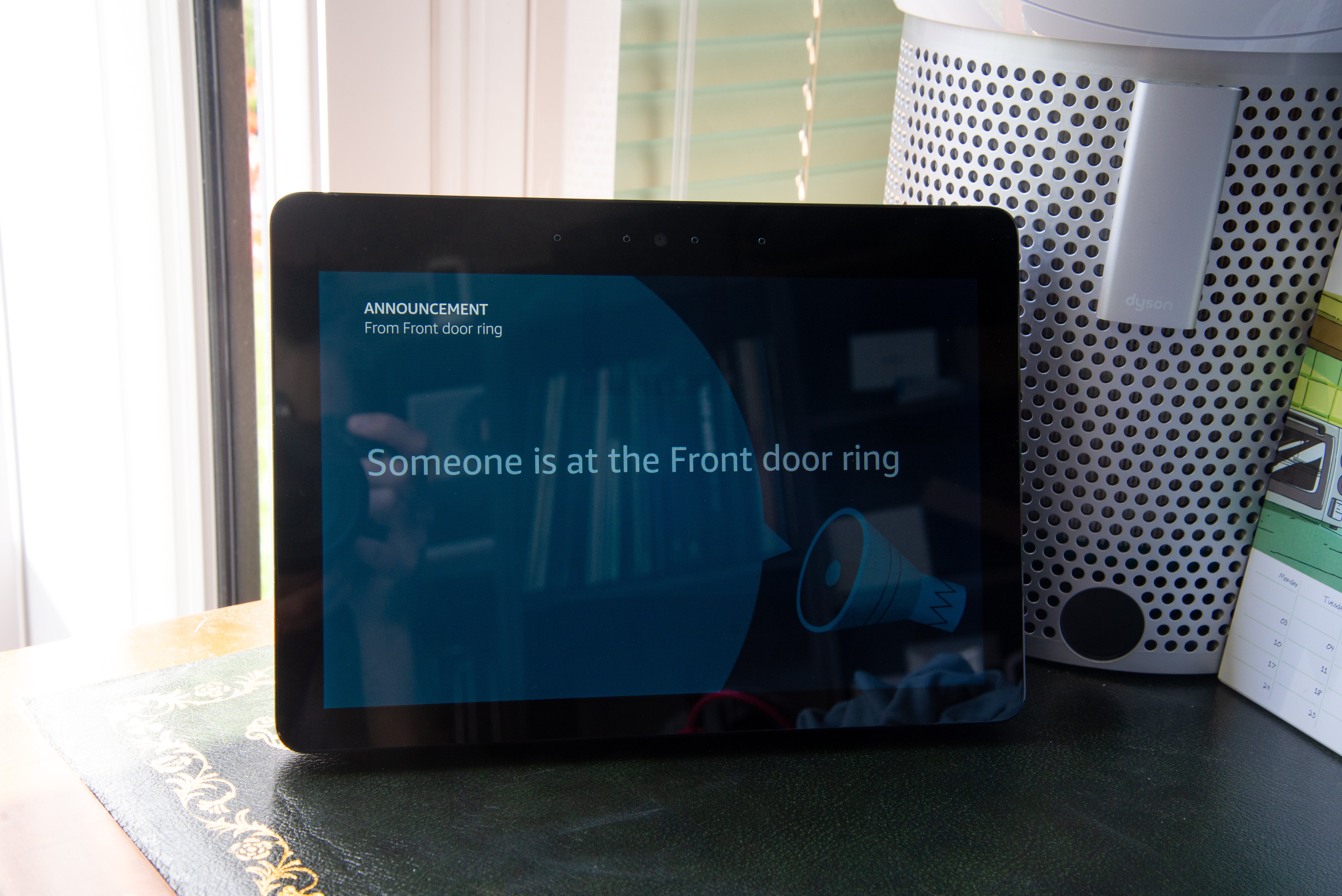
Echo Show integration is nice, but it would be better if you automatically saw a preview of your front door
There’s no Google Assistant integration as the Ring Skill is no longer available. That’s a shame, as it would be nice if you could at least view your doorbell’s video feed from a Google-powered smart display.
Should you buy the Ring Door View Cam?
The Ring Door View Cam is a clever product that’s ideal for people who don’t have space for a smart doorbell or aren’t allowed to drill holes. If you fit that bill, then this really is the product for you.
If you have room and are allowed to fit a doorbell in the traditional place, then I’d opt for a different product, simply because you get a fixed field of view, whereas the Door View Cam swings when you open and close your door.
The choice comes down to how your home is set up. If you don’t have a wired doorbell already, then the Ring Video Doorbell 2 is the best option by far. If you do have a wired doorbell, then go with a wired smart doorbell, as you get proper activity zones to limit what’s recorded. The Ring Video Doorbell Pro is an excellent choice: it looks neat, is well priced and comes with all the kit you need. It’s particularly useful if you have Echo speakers and/or other Ring cameras. The other choice is the Nest Hello, which is a bit more expensive but gives you facial recognition and continuous recording. It’s the best option if you have Google Assistant smart speakers. Both of these products really need professional installation, though.
Ultimately, it’s good to have options depending on the type of home that you have. The Ring Door View Cam ably fills a niche and makes it possible for those previously locked out of video doorbells to boost their security.


